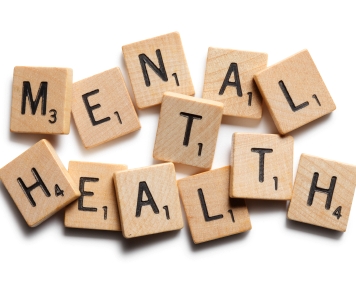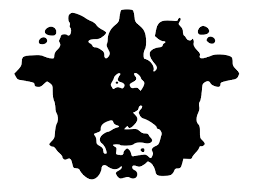In an article by Samantha Gluck, she says…
Imagine others looking at you with accusing eyes and whispering about you behind your back when they find out you have breast cancer. Imagine feeling fearful of seeking proper medical help because you’re afraid you’ll lose your job if anyone finds out about it.
This shocking comparison makes one think about what exactly mental health is. Mental disabilities are not something one chooses to have, just like someone does not choose to have breast cancer. Someone does not willingly choose to struggle every day with a mental illness. However even so, mental illnesses are stigmatized greatly and people place discrimination on these individuals, and because of these prejudices, it makes it harder for people to get jobs, to go to school, and overall have equal rights in the eyes of the law.
A stigma is defined as “a perceived negative attribute that causes someone to devalue or think less of the whole person”. Stigmas and discrimination against people with mental disorders are not always intentional and do not all come from a source of hatred, but rather from a place of misinformation and discomfort with the situation at hand. No matter what the reason is behind these stigmas, they cause people to treat individuals with mental disorders differently. It is imperative to recognize that not all people with mental disorders are alike, that there is a spectrum of illnesses that range in the level of debilitating symptoms of their disorder. Because of these generalizations made about mental illnesses in general, it causes great harm and further imposes on many rights that these individuals have, specifically talking about those in the workplace in this article.
First off, what exactly is a mental illness?

According to the American Psychological Association, or APA, “mental illnesses are health conditions involving changes in thinking, emotion or behavior (or a combination of these).” The hundreds of mental disorders that are listed in the DSM-V range in intensity and form.
Wait, what is the DSM-V?
The Diagnostic and Statistical Manual of Mental Disorders, 5th edition, or DSM-V, is a guidebook that contains all of the mental health disorders known, and it is used by medical professionals to diagnose patients. It has descriptions and symptoms of all of these disorders clearly defining them to give an easier and more accurate diagnosis. In the most current version of this manual, there are 297 disorders listed, and among the most common of the disorders, and also the most stigmatized, are depression, bipolar disorder, schizophrenia, OCD, and anxiety disorder.
Major Depressive Disorder: Depression is a common and serious medical illness that negatively affects how you feel, the way you think and how you act. Fortunately, it is also treatable. Depression causes feelings of sadness and/or a loss of interest in activities once enjoyed. It can lead to a variety of emotional and physical problems and can decrease a person’s ability to function at work and at home.
Bipolar Disorder: Bipolar disorders are brain disorders that cause changes in a person’s mood, energy and ability to function. Bipolar disorder is a category that includes three different conditions — bipolar I, bipolar II and cyclothymic disorder.
Schizophrenia: The DSM-5 schizophrenia diagnosis requires persistence of two of five symptomatic criteria (delusions, hallucinations, disorganized speech, disorganized behavior or catatonia, and negative symptoms).
Anxiety: This disorder is an emotion characterized by feelings of tension, worried thoughts and physical changes like increased blood pressure. People with anxiety disorders usually have recurring intrusive thoughts or concerns. They may avoid certain situations out of worry. They may also have physical symptoms such as sweating, trembling, dizziness or a rapid heartbeat.
Obsessive Compulsive Disorder: OCD is classified as an anxiety disorder in which people have recurring, unwanted thoughts, ideas or sensations (obsessions) that make them feel driven to do something repetitively (compulsions). The repetitive behaviors, such as hand washing, checking on things, or cleaning, can significantly interfere with a person’s daily activities and social interactions.
All of these disorders and definitions listed are very broad, and within these disorders are many subsets showing the grey scale that one can fall under in these broad diagnoses. Not one person will have the dictionary diagnosis of a mental illness, rather each person has a unique version of one or multiple disorders. However, many people are unaware of the spectrum that mental illness takes on in individuals, and because of this, generalizations are made and this is how stigmas are generated.
We need some background info on discrimination…
What is a STIGMA
Stigmas are created out of the lack of knowledge and ignorance on the topic they are referring to. In the case of mental illness, stigmas are created by a quick judgement of what they think they see in maybe one person, or what they have seen on TV, or what they have heard from friends. These quick assessments encourage prejudice and they are only amplified through others with the same perception. Terms associated with these mental disorders are mistreated and are implied as being derogatory, only making the discrimination that much more present in society.
These stigmas that are created build discrimination against people with mental illnesses where there should be none. However, because these prejudices are put in place, it causes predisposed negative bias when it comes to many areas that influence basic human rights.

Mental health and discrimination in the workplace
“Approximately 1 in 5 adults in the U.S.- 43.8 million- experiences a mental health illness in a given year.”
This is a staggering amount of people that suffer from mental illnesses, just in the US alone! As discussed earlier, stigmas cause generalizations about individuals with mental illnesses, and because of this there is great discrimination against people with these disorders. This discrimination is presented in the statistic that “80% of people with mental illnesses are unemployed.”
It is not that these individuals are not looking for a job, and it is not that they are not capable in many cases, in actuality, “2/3 [of people with mental disorders] can successfully hold down a job if they are given appropriate support.” Support is the key word here.
The Americans with Disabilities Act (ADA) was put into place to give equal opportunity for individuals with disabilities (including mental illnesses) in employment, transportation, state and local government services, and more. It was established as to guarantee this appropriate support in the workplace, however since this act has been put in place, employers have increased their reluctance to hire people with mental illnesses due to the fact that it costs them more to provide these services. In an article by CPRF, it shows this fact when they said “not only do PWDs [people with disabilities] experience lower rates of employment, they also obtain less full-time employment than their counterparts without disabilities.”
However, these services and support in the workplace are so necessary for people with mental illnesses. For many individuals with mental health issues, work serves as a place of therapy. Because of this, many people often are reluctant to to seek treatment for their mental disorders for fear of losing their job. When individuals do this, their illnesses go untreated and can lead to an array of issues causing further harm to themselves, and further discrimination from others. Through not seeking treatment, productivity will decrease and social relationships within the workplace can take a toll, and overall it can cause a worsening of the mental illness of which they are suffering.

Awareness of these mental illnesses are key to removing these stigmas. When people are accepting and welcoming, many changes can be made to improving the lives of these people struggling with the unknown. Struggling with the illness that no one can see, not even people themselves that have it. Improvements in the workplace, improvements in social relations, and improvement in everyone’s lives whether they are the ones with the mental illness or not, overall lessening the gap that was made so quickly by discrimination.


I think the relationship of mental disorders and the workplace is important to bring light to, and is similar to the relationship of mental disorders in the school system. Similar to the quote that you begin your post with, mental disorders are often not accepted as an excuse to miss school, and if it is known, there is a certain judgement placed behind it. So I think most the points you made in your post, could and should also be applied to the education system. People shouldn’t be worried about missing school because of mental illnesses and they should be given the proper support so they can succeed.
LikeLike
I definitely agree with what you are saying! I definitely considered adding this to my post, and I have done a lot of research on this topic, but I thought that there was too much to dive into in one post, so I am hoping to do a long post at some point and talk about this topic more!
LikeLiked by 1 person
Super interesting read! Though, I have to ask, to what extent should the workplace be involved with mental health? With physical health, workplace disability pay and injury pay is central to protecting workers with physical health problems. Yet how do we measure something more intangible as mental health? Many high-pressure jobs such as air-traffic control and oil work have made mental health a central part in maintaining their workforce. Someone with mental health issues in a high-risk position such as air-traffic control puts thousands of lives at risk. Yet the pressure on these workers are so great that they are very afraid of disclosing their issues, at risk of losing their jobs.
This seems to be a very complex issue that I don’t think will be easily resolved.
LikeLike
I agree with what you are saying, and I do think that this is a very complex issue that is so hard to navigate. As you were saying, individuals with mental health problems do have debilitating means that will not allow them to perform as well in a high risk job, and this puts many other peoples lives at risk because of this. I think the issue is realizing these mental health issues in the workplace, and providing more outlets for these people to get the help that they need to flourish. But for sure, as you said, this is not something that can easily be resolved in any means.
LikeLike